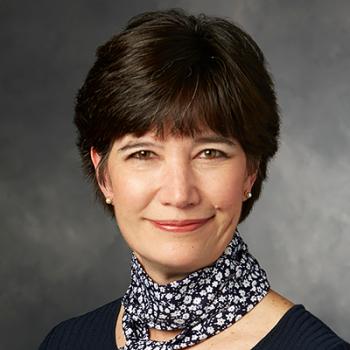July 2023 Champion
Laurie Lalakea, MD

Dr. Laurie Lalakea’s wake-up moment came in the form of soot falling from an orange sky. It was during the record-setting 2020 wildfire season in California. Dr. Lalakea, chief of otolaryngology at Santa Clara Valley Medical Center in the Silicon Valley exurbs of San Francisco, knew climate change contributes to wildfire risk. But this brought it literally home.
Despite what the media might suggest, not everyone in Silicon Valley is rich; Dr. Lalakea works in a three-hospital, 15-clinic public safety net system owned by the county. “Many of our patients are socio-economically disadvantaged, and are going to be the most disproportionately affected by the health harms of climate change,” she says.
Although Dr. Lalakea wanted to take action, her specialty did not put her on the front line of the climate wars. “I thought, ‘What can I do as an individual, with very little background in the intersection of climate and health?'” she says.
The path became more clear during a heat wave. In September of 2022, the Golden State turned crispy, with record-setting temperatures in the Bay Area. Demand for electricity for cooling was as intense as the heat — and in the midst of it, her hospital and others had power outages. Emergency rooms were placed on diversion status. “Patients had to be transferred from the ICU — intubated — to another area of the hospital,” she says.
That crisis got heightened attention among top administrators. Dr. Lalakea had been giving small presentations — but now she was asked to speak systemwide to hundreds of staffers, including senior leadership. She followed up with a petition drive in which 361 staffers called for enterprise-wide climate action. She sent a letter with the petition to the administration, followed up by requesting a meeting — got one — and asked for the system to take the federal Health Sector Climate Pledge. In addition to moral, existential, equity, and quality imperatives, her pitch stressed that sustainability-focused changes can save the system money — things like reducing the use of single-use devices, and instrument reprocessing.
In May, the system took the pledge, in which organizations commit to reduce emissions; for instance, hitting net zero by 2050 and having a step-by-step plan to do it — and having a resilience plan to help groups that face disproportionate climate risk. “There’s a lot to do,” Dr. Lalakea says. “But everybody has to start somewhere. And it’s great to be at the start.”
